A Summer of Death
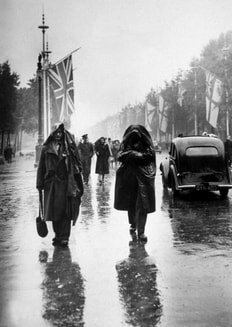 By M.P. Pellicer | Stranger Than Fiction Stories
By M.P. Pellicer | Stranger Than Fiction StoriesWorld War II ended, but violence and destruction visited London in another manner. Women were being slain in horrific ways, and in some instances Scotland Yard was at a loss to identify the perpetrator.
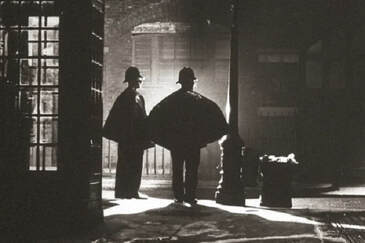 London police on patrol c.1940s They were pretty women and young girls, all dead by the hand of a killer or killers who were savage and sadistic.
London police on patrol c.1940s They were pretty women and young girls, all dead by the hand of a killer or killers who were savage and sadistic.Sometimes there were hardly any clues, and the authorities were baffled. In total there were 21 deaths, 14 of them were women and unsolved.
The detectives of Scotland Yard were forced to use adjectives such as "horrible" and "gruesome" in their reports because nothing less would apply.
English Bobbies were unarmed, and Londoners never expected something of this caliber to happen in their city.
Police described the anti-social behavior as something not seen since 1918, no doubt they recognized a correlation with the end of war, and with the surge of violence. It wasn't only murders, but other crimes were being committed at more than the double during the 1930s. In London alone offenses averaged 10,000 in one month. In 1938, it had been 4,000.
There were 20,000 vacancies open on the police force throughout Britain, 7,000 of them in London.
However despite the offer of pay and housing, it brought in few recruits.
Scotland Yard's homicide department was undermanned, and their personnel worked 16 hours per day. Many of them had gone three months without a day off.
 Canterbury, U.K. c.1948 On February 16, 1946, Lillian Miller, 20, wife of a Canadian soldier was strangled on a footpath after she went to a dance in Canterbury. Police questioned 1,700 British soldiers that were quartered near the murder scene, but could find no leads.
Canterbury, U.K. c.1948 On February 16, 1946, Lillian Miller, 20, wife of a Canadian soldier was strangled on a footpath after she went to a dance in Canterbury. Police questioned 1,700 British soldiers that were quartered near the murder scene, but could find no leads.Her death remained unsolved until 1982.
In 1946, William Phipps was 8 years old. At that age he witnessed his drunken father strangle to death a waitress in a lumber yard where he had been playing. His mother swore him to secrecy, she then washed her husband's clothes which were full of blood from the victim. In 1982, he told The Daily Express, "Now that she is dead, as well as my father, I have to get it off my conscience. I saw my father murder a woman."
Lillian was married to a Canadian Army private named Bill Miller. After the war she worked as a waitress and lived with some relatives. Her husband was in Saskatchewan preparing a new home for her and their son Victor.
On the night she was killed, she went to a dance with her brother Frederick Kemp. Examination of her body show how she was covered with bruises from resisting her attacker. He had attempted to rape her before strangling her to death.
Phipps continued with his story. "I heard someone coming and I hid in a secret camp some of us had made. I saw my father come through the entrance of the yard with a woman and I saw him kill her. I knew that she was dead. I went home and did not tell anyone. My father was a drunken violent man and I was afraid of him. My mother knew what he had done as he came home with bloodstains on his clothes, and she helped to clean them up. She made me promise never to say anything to anyone and I never did."
His mother Anna Laura lived in Canterbury and died in 1980, and his father Ernest, a railway porter died in 1963.
It's unknown if authorities ever used this information in regards to the case of Lillian Miller.
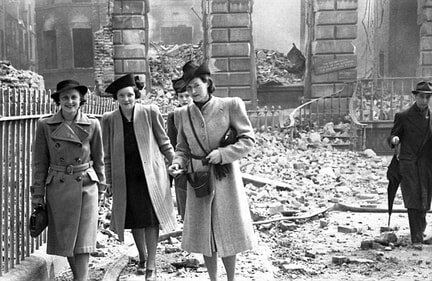 Damage caused by blitz, during WWII, illegitimate births increased and so did venereal disease by 70% Two weeks later, Francis Mizzi (aka Francis Hanley), 26, well known in Piccadilly Circus bars was strangled with a stocking in her London flat in Soho. Three U.S. servicemen were questioned and then released.
Damage caused by blitz, during WWII, illegitimate births increased and so did venereal disease by 70% Two weeks later, Francis Mizzi (aka Francis Hanley), 26, well known in Piccadilly Circus bars was strangled with a stocking in her London flat in Soho. Three U.S. servicemen were questioned and then released.She was last seen walking towards her flat in the company of a small, dark-haired man wearing a shabby suit. Her next door neighbor said she heard the sound of furniture being moved around and a muffled cry. The police forced their way into her flat after her friend called police.
Another report was Francis being seen a little after midnight with a short sailor, young with a Scottish accent. He was sturdily built, but had a thin, boyish face with a sallow complexion, he wore his dark hair well greased.
Police believed her killer spent at least a couple of hours in Francis' apartment. Her handbag was missing, and robbery would seem to be the motive, but other rumors circulated that she was killed by a gang for being a "squealer", and that she informed on one of her friends who belonged to a black market gang.
The only clue left behind was the button from a man's suit, strands of hair and a partial fingerprint from the bedside table.
Francis was married to a 27-year-old Maltese man who was also her pimp. On February 27, 1946, he spent three months in prison after pleading guilty for promoting her prostitution. He had been convicted of the same in February, 1944.
Her murder remains unsolved.
 Muriel Drinkwater's grave c.1946 (Source - Mirrorprix) Muriel Drinkwater, 12, was killed on June 27, 1946. She disappeared walking a one-mile path from where her school bus dropped her off and her home. Her mother saw her coming along the trail that led into the woods, and then she was not seen again.
Muriel Drinkwater's grave c.1946 (Source - Mirrorprix) Muriel Drinkwater, 12, was killed on June 27, 1946. She disappeared walking a one-mile path from where her school bus dropped her off and her home. Her mother saw her coming along the trail that led into the woods, and then she was not seen again.The last person to see her was Hubert Hoyles, 13, who passed her on the path. He had gone to her family's farm to buy some eggs.
The next day, a police inspector found her body. She'd been shot twice in the chest, beaten around the head and raped. Within a few days a WWI-era, Colt .45 pistol was located. This was the murder weapon.
Police searched up to 150 miles around the home, and interviewed approximately 20,000 men in Swansea and the adjoining area.
Despite the intense search, the case remains unsolved.
In 2003, the case was re-opened hoping that answers could be found using DNA evidence. This effort stalled out until 2008 when retired, cold case detectives found Muriel's clothes in storage. On the back of her coat, a semen stain that had faded was circled in yellow. A DNA profile was retrieved and made, but no match was connected to any DNA in the database.
Hoyles, who passed her on the path, was cleared.
Less than two weeks after Muriel's murder, another girl was killed. Her name was Sheila Martin, 11, who was raped and strangled with her hair ribbon. She was found in a thicket near Falkham Green while 10,000 people watched motorcycles races a few yards away. Like Muriel she was only a half mile from her home.
In 2020, a documentary Dark Land: Hunting the Killers suggested that Ronnie Harries was Muriel's killer. He was hanged for the murder of John and Phoebe Harris an older couple who were his relatives. They presented evidence at the time of Muriel's death that he was employed by her father.
DNA has also been taken from Muriel's family in order to rule them out.
One of Muriel's cousins offered insight into what happened to the family after her death. He said "his grandparents (Muriel's parents) had changed after the murder. They had been regular churchgoers, but stopped going to church and moved away from the farm within two years of the murder."
In 2010, the National Records and Archives closed the case off to public access at the request of Scotland Yard. The reason given was it could help find the perpetrator (as long as they're six feet above ground that is).
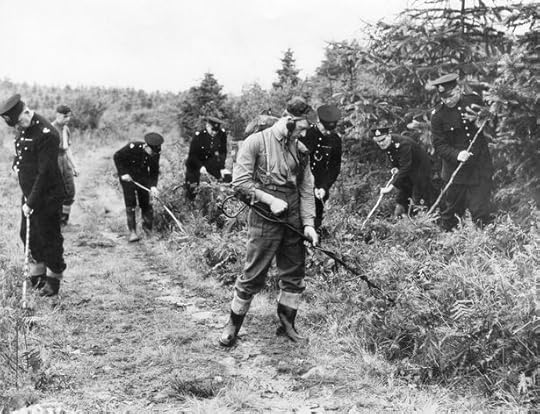
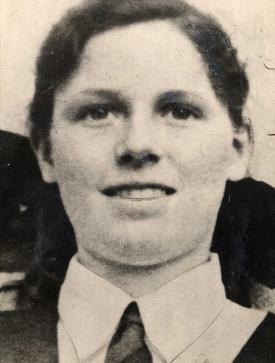
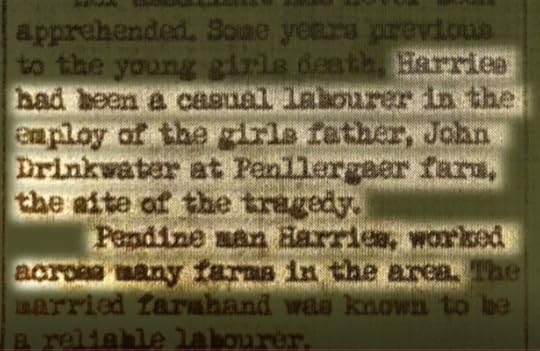
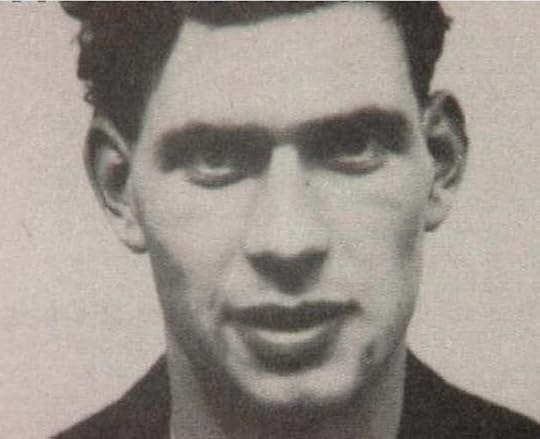
 Despite the publicity of her murder and efforts to locate the perpetrator the case remains unsolved Ivy Griffith, 33, was beaten and kicked to death on a lawn next to her Newcastle-Under-Lyme home. One of her ears was torn off. When Ivy was found she was fully clothed, and her brooch was recovered on a footpath five or six yards from her body.
Despite the publicity of her murder and efforts to locate the perpetrator the case remains unsolved Ivy Griffith, 33, was beaten and kicked to death on a lawn next to her Newcastle-Under-Lyme home. One of her ears was torn off. When Ivy was found she was fully clothed, and her brooch was recovered on a footpath five or six yards from her body.Her case remains unsolved
 Robert Parrington Jackson On May 29, 1946, Robert Parrington Jackson, a theater manager, and one time British naval officer, and actor was shot to death in his office at the Odeon Cinema in Bristol. There was no attempt at robbery, and no clues could be found at the scene.
Robert Parrington Jackson On May 29, 1946, Robert Parrington Jackson, a theater manager, and one time British naval officer, and actor was shot to death in his office at the Odeon Cinema in Bristol. There was no attempt at robbery, and no clues could be found at the scene.He was shot during a scene in the film The Light That Failed by Rudyard Kipling which was playing at the theater. There is a scene where 5 shots ring out, it was then that Jackson was hit in the head.
At the inquest the pathologist confirmed it was not a suicide. His findings were that it was heavy caliber weapon used in the shooting. The police believed the perpetrator escaped by going over girders beneath the cinema balcony.
In 1989, allegedly a gangster made a deathbed confession saying he was trying to rob the cinema and shot Jackson then. There has been no corroboration if this is true.
The building, later turned into a clothes store has reports of haunting activity, and two exorcisms have been performed there.
This case remains unsolved.
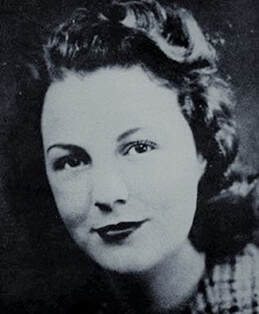 Doreen Marshall murder in 1946 There was the mutilation killing of Doreen Marshall, 21, who nude body was found in a grove near the private beach on a hotel in the resort town of Bournemouth.
Doreen Marshall murder in 1946 There was the mutilation killing of Doreen Marshall, 21, who nude body was found in a grove near the private beach on a hotel in the resort town of Bournemouth.She had served in the WRNS during the war. Soon after discharged in June, 1946, she took a holiday in Bournemouth to convalesce from a bout of measles and influenza.
She stayed at the Norfolk Hotel since it was the only one open to civilians; the rest were used as billets for troops. The hotel was close to 100-foot cliffs that framed a beach, with a sea wall promenade. While taking a walk there she met a handsome man who introduced himself as Group Captain Rupert Brook. In reality his name was Neville Heath, and he was already tied to the murder of another woman. She had afternoon tea with him, and spent the rest of the afternoon in his company. She then accepted his dinner invitation.
Something happened during the time they spent together, where she started to feel uncomfortable being with him and asked another guest to call a taxi for her. Witnesses said he had been drinking heavily. Heath cancelled the taxi, and offered to walk her back to her room. She disappeared and on Friday, July 5, this was reported to the police by the manager of the Norfolk. The manager also called the Tollard Royal, aware she had dined there the night before.
The following day, Heath spoke to a constable offering his help. He went to the station and from a photograph identified her as the woman he dined with the night before, but his story was that he had left her in the gardens in central Bournemouth.
 Tollard Hotel That very day her father and sister came to Bournemouth, and went to the police station where they were introduced to Heath under his alias. He even joked about his similarity to the poster put out for Neville Heath.
Tollard Hotel That very day her father and sister came to Bournemouth, and went to the police station where they were introduced to Heath under his alias. He even joked about his similarity to the poster put out for Neville Heath. The police grew suspicious, went to his room and searched it. A bloody scarf was found in his room, as well as a railway cloakroom ticket, which in turn led to a suitcase with a diamond pattern weave riding whip inside it. It was stained with blood. His first victim, Margery Gardner had been bound at the ankles and whipped by a leather crop with metal tips that left 17 gashes on her chest, stomach, back, and face which bled extensively. After further questioning he admitted his true name. He was taken to London and charged with the murder of Margery Gardner.
It was not until July 7, when a waitress walking her dog noticed a swarm of flies by some rhododendrons. She found Marshall's nude, badly mutilated body. She had defensive wounds on her hands. Her wrists and ankles were tied, and she was beaten around the head. One of her nipples had been bitten off, and her throat slashed. Like Margery Gardner, a foreign object, possibly a branch was shoved into her vagina. She had a gash that ran from the inside of her thigh to her mutilated breast.
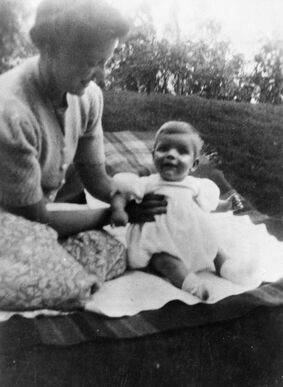 Elizabeth Pitt Rivers married Neville Heath and had a child with him. Neville Heath had a troubled path. He joined the Royal Air Force in 1937, at the age of 20, but was dismissed for going AWOL. He used the alias of Lord Dudley and Lieutenant-Colonel Armstrong while forging documents and breaking into houses. He was sent to a youth detention center.
Elizabeth Pitt Rivers married Neville Heath and had a child with him. Neville Heath had a troubled path. He joined the Royal Air Force in 1937, at the age of 20, but was dismissed for going AWOL. He used the alias of Lord Dudley and Lieutenant-Colonel Armstrong while forging documents and breaking into houses. He was sent to a youth detention center. At the beginning of WWII Heath joined the Royal Army Service Corps and was shipped off to the Middle East. There he frequented Cairo brothels where he paid to whip young prostitutes. A year later he was court martialed for fraud offenses and for being absent without leave.
Enroute to England he escaped the authorities in Durban, South Africa. Once there, he used the name of Bruce Lockhart, and the handsome wavy-haired, blue eyed charmer romanced Elizabeth Pitt Rivers, age 18. Much to the dismay of her wealthy family they married and had a son.
He changed his surname to Armstrong, joined the South African Air Force and attained the rank of captain. He was seconded to Bomber Command back in England
To add to his other vices, he was a gambler who was soon putting out bad checks to cover his losses. By 1945, he was facing another court-martial for wearing military medals without authority. He was dismissed from the Service and arrived in London in February, 1946.
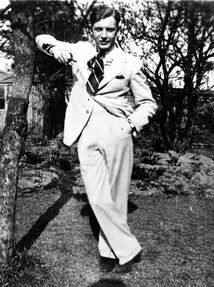 Neville Heath was executed in 1946 for the murder of Margery Gardner At the end of the war his wife divorced him on the grounds of desertion.
Neville Heath was executed in 1946 for the murder of Margery Gardner At the end of the war his wife divorced him on the grounds of desertion.He didn't lose his penchant for using aliases and started calling himself Lieutenant Colonel Jimmy Heath. In June 1946, due to his dismissal from the RAF, he was denied a civil pilot's license. The 29-year-old began to haunt bars, which is where he found his first victim Margery Gardner.
His trial on September 24, 1946, lasted three days. He was convicted of Margery's murder, and sentenced to hang. Heath had been charged with Doreen's murder, but because of his execution it didn't go to trial.
While awaiting execution he asked to receive all the major magazines who were following his trial, and referred to his pending execution as a "one-way op", military parlance for a suicide mission.
Right before his hanging he was asked if he wanted the customary glass of whiskey, to which he replied, "While you’re about it, sir, you might make that a double."
Published on October 21, 2022 08:00
No comments have been added yet.



